Battle intensifies against sepsis, a condition that can kill
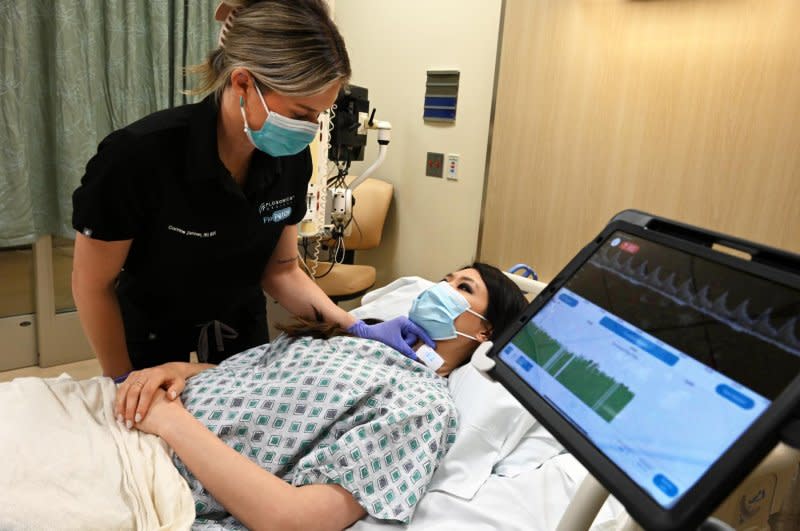
NEW YORK, Sept. 14 (UPI) -- The government and local hospitals are seeking to promote greater awareness about sepsis and better combat what is an overreactive immune response to infection that can result in chills, rapid breathing, confusion and sometimes death.
Some of the latest efforts include a device that monitors blood flow, precision medicine tools that identify the microbes that cause sepsis and software that integrates into the electronic health record for tracking vital signs.
"If someone is experiencing a fever, lethargy or just not feeling well, there may be an underlying infection. So, it's important to pay attention to those symptoms, or go to the emergency room to be treated," Cheryl Reinking, chief nursing officer at El Camino Health in Mountain View, Calif., told UPI via email.
Any type of infection -- bacterial, viral or fungal -- can lead to sepsis. And, according to the Mayo Clinic, the more common causes of sepsis are infections in the lungs, kidney, bladder, digestive system, bloodstream, burns, wounds and catheter sites.
"Sepsis is taking too many lives. One in three people who dies in a hospital has sepsis during that hospitalization," Centers for Disease Control and Prevention Director Dr. Mandy Cohen said in a recent news release that announced her agency's intensified efforts to combat the condition.
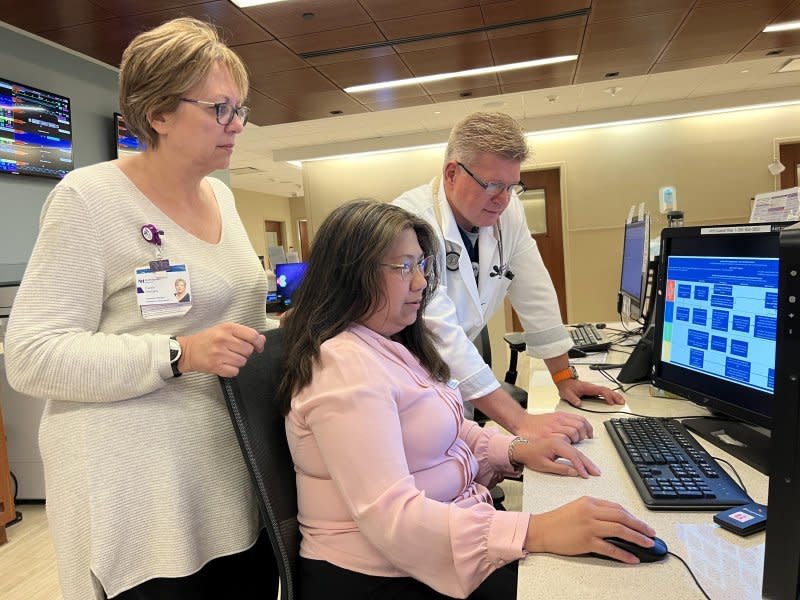
Rapid diagnosis and immediate appropriate treatment, including antibiotics, are essential to saving lives, yet the challenges of awareness about and recognition of sepsis are enormous, Cohen said. Efforts are being made on many fronts.
New monitoring device

For example, individualized fluid therapy can benefit hospitalized patients with sepsis, and a new, palm-sized device that monitors blood flow in real time is guiding El Camino clinicians in this approach. Since March, the health system has used that device, FloPatch, on more than 230 patients.
Attached with an adhesive to a patient's neck, the wireless FloPatch continuously assesses blood flow in the carotid arteries -- major vessels that supply blood to the brain -- and then transmits data to a secure app. That data helps physicians manage intravenous therapy.
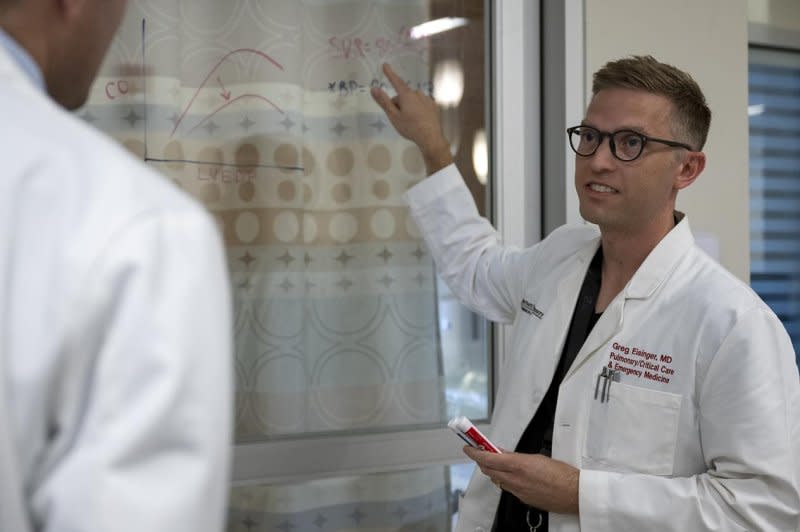
"When a patient arrives at one of our hospitals with sepsis, the first line of treatment is IV fluids and antibiotics," Reinking said. "However, many patients do not benefit and may be harmed by excess IV fluids, even early in care."
The CDC recently released new guidelines to help hospitals to quickly detect and treat sepsis. Each year, more than 1.7 million Americans develop the condition, and about 350,000 die or are moved to hospice.
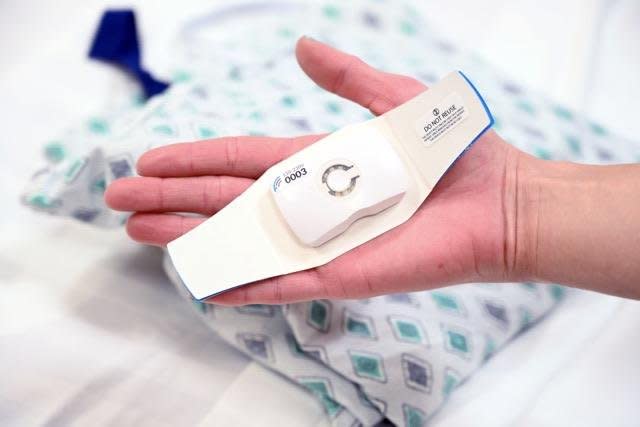
"Many different types of infections can lead to sepsis, including bacterial blood infections and COVID-19, making it challenging to diagnose and treat," said Dr. Chaz Langelier, an associate professor of medicine in the division of infectious diseases at the University of California-San Francisco.
Out of control response
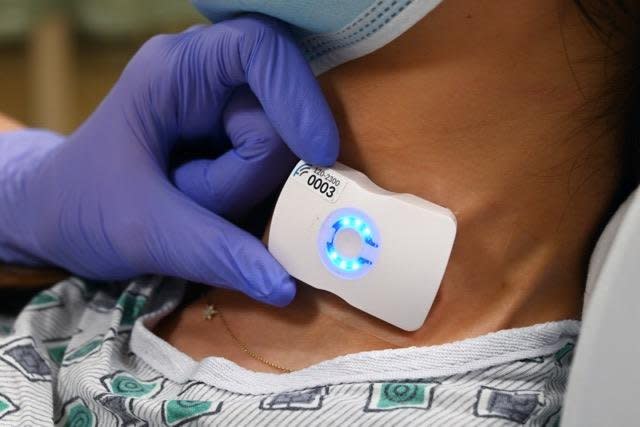
"Sepsis involves an out-of-control immune response to an underlying infection," he said, adding that drug discovery continues to generate hope for more effective treatments.
"New precision medicine tools and methods are being developed at UCSF to better identify the microbes that precipitate sepsis, understand the dysregulated immune responses that drive severe illness and identify which patients might benefit most in clinical trials of new sepsis drugs," Langelier said.
While sepsis can affect anyone, those with weakened immune systems or chronic infections are at highest risk. Symptoms may vary significantly among patients and often can be masked when someone has multiple health issues, said Akin Demehin, senior director of quality and patient safety at the American Hospital Association.
"Early diagnosis and appropriate early treatment with antibiotics are essential to improving outcomes and saving lives for patients with sepsis," Demehin said.
That's because as sepsis worsens, "vital organs, such as the brain, heart and kidneys, don't get as much blood as they should. Sepsis may cause atypical blood clotting. The resulting small clots or burst blood vessels may damage or destroy tissues," according to the Mayo Clinic.
"But getting to rapid diagnosis and treatment is complex. Sepsis isn't just one disease. The early signs of sepsis can look extremely different in a premature newborn than in a trauma patient coming out of surgery or an elderly patient being transferred from a nursing home," Demehin said.
Older patients at risk
The patients most likely to contract sepsis are older or have multiple medical problems, such as diabetes, hypertension, obesity, and heart, kidney, lung and liver disease, Dr. Greg Eisinger said.
Eisinger is an assistant professor of pulmonary-critical care and emergency medicine at Ohio State University's Wexner Medical Center in Columbus.
Also are elevated risk for sepsis are those suffering from compromised immune systems due to cancer therapy, organ transplants and other conditions that necessitate immunosuppressive therapies, Eisinger said.
Patients with HIV/AIDS, those with medical devices such as dialysis or urinary catheters or pacemakers, and those who live in skilled nursing facilities or correctional facilities, are more prone to sepsis, he said.
In the last fiscal year, Northwestern Medicine Delnor Hospital in Geneva, Ill., saw a 10% increase in the total number of sepsis patients. There also was a 33% increase in patients who arrived with severe sepsis, signaling the need for effective and timely sepsis treatment, Dr. Steven Coker Jr. saidl.
Coker is medical director of the emergency department and co-physician lead for sepsis at Delnor Hospital.
There, the number of patients who were treated for septic shock -- a life-threatening condition in which blood pressure drops dangerously low because of an infection -- has decreased slightly, and Delnor Hospital's mortality rate remains lower than the national average, thanks to early identification and treatment of sepsis, he said.
Rapid treatment
At Delnor Hospital, an algorithm running in the background of the electronic medical record alerts clinicians that sepsis is a possibility. They obtain blood work earlier in the patient's course that would indicate the presence of sepsis, and they begin rapid treatment because time is of the essence.
Nurses play an important role in this process, said Carrie Sinisko, a registered nurse and outcomes manager in Delnor Hospital's emergency department.
"Our nursing staff team members have been trained to recognize the signs and symptoms of sepsis and to initiate care interventions emergently to allow for the best possible patient outcomes," Sinisko said.
To manage sepsis in an expeditious manner, Yale School of Medicine is evaluating the use of software that integrates into the electronic health record and tracks clinical information, including vital signs.
"Software continuously running in the background monitors this data in real time and alerts clinical staff if there are any signals noted which may indicate a patient is developing sepsis," Dr. Richard Martinello told UPI.
Martinello is a professor of internal medicine and pediatrics in the sections of infectious diseases at Yale School of Medicine. He also is the senior physician director of infection prevention at Yale New Haven Health.
"With sepsis, early identification and management can truly make the difference between life and death," he said.
Demehin, of the American Hospital Association, expressed optimism for sepsis management in this age of technological transformation.
"Real-time analytics, machine learning and natural language processing are helpful tools for clinicians in predicting, identifying and responding to sepsis," he said.
"Artificial intelligence can be used in hospital settings to review digital records in real time to help doctors and nurses identify patients at risk of sepsis even earlier. We must continue to resource these kinds of innovative approaches as we strive to stamp out sepsis."

